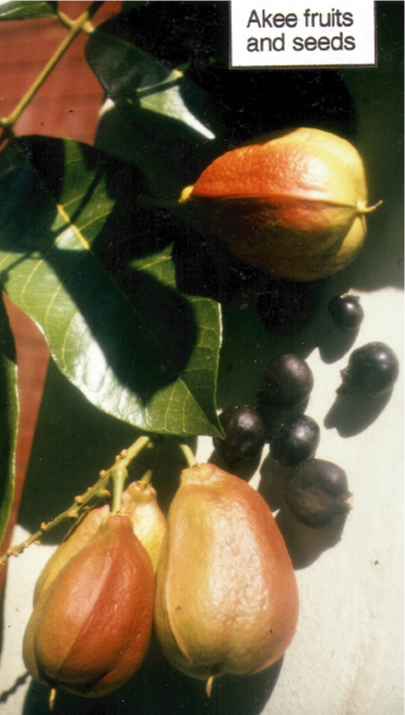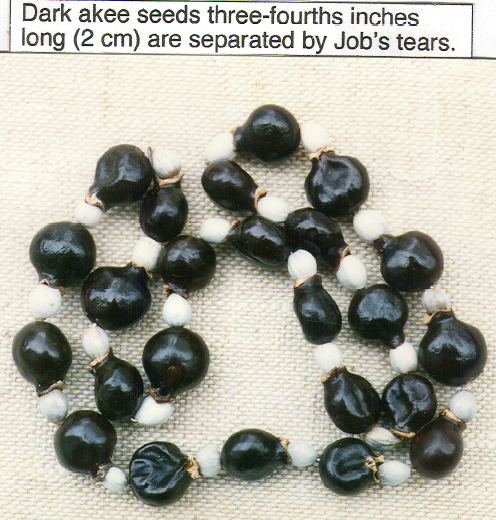

The akee tree, Blighia sapida, native to West Africa, is now cultivated and naturalized in many tropical and subtropical areas. The genus was reputedly named for Captain Bligh of Bounty fame. Akee is the name given to the fruit in parts of West Africa. The aril, an appendage of the seed, is its only edible portion. Its tiny brain-like fissures account for its common English name, vegetable brain.
The fruit is a leathery, pear-shaped scarlet capsule, splitting in three valves to expose shining black seeds with a yellowish fleshy aril. With the exception of the ripe aril, the seeds are quite toxic.
When perfectly ripe, the cream-colored aril attached to the seed is considered a great delicacy in West Africa. This unusual ingredient added to salted fish is the national dish of Jamaica. When gathered at exactly the right stage, stewed, and browned in butter, it has a mild nutty flavor. Unripe or overly ripe arils can be extremely toxic. "Jamaican sickness," poisoning by arils, can cause hypoglycemia and even death.9
It is regarded as a sacred tree in the Ivory Coast.10
Seeds are also used as marbles, buttons and beads.
 |
 |
BACK |
TOP |
FWD |